Not All Heat Shrink is Equal
Posted by Pacer on 29th Sep 2025

Heat shrink is an extremely common product that most people are familiar with. It is used in a wide range of industries, from marine to automotive to appliances. These industries all utilize this essential tool, but how much do you really know about heat shrink? Let us take a quick glance at a few different types so you can know which one is best suited for your projects.
What is heat shrink?
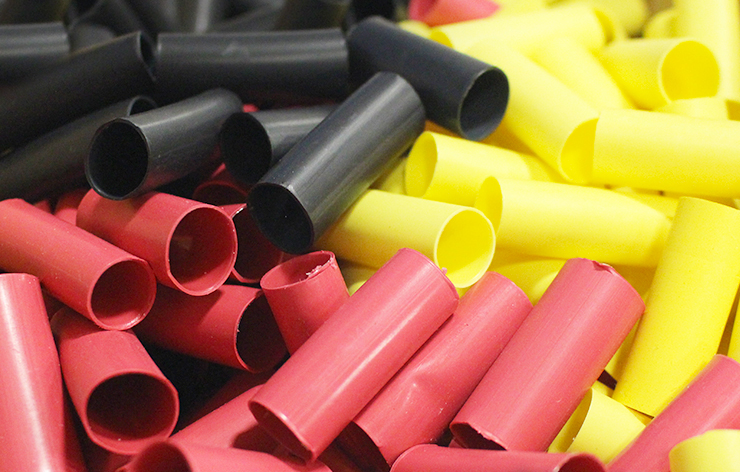
The simplest way to describe it is that heat shrink is a plastic tube that is designed to constrict, or reduce in size (diameter), as heat is applied to it. It is commonly used in electrical work to insulate wires, provide resistance to abrasion, and offer environmental protection. It is these protections that make heat shrink such a popular item. It can be used on both solid and stranded wires and even battery cables. So that is the basic idea behind heat shrink, but other people have taken the idea a little further. Some industries use heat shrink to protect small parts from minute abrasion, bundle wires together, or even repair damaged insulation. With all these uses, it is easy to understand why heat shrink is such a ubiquitous product.
How does it work?
For the most part, heat shrink is made from either nylon or polyolefin. These specially formulated materials are designed to shrink radially but not lengthwise. Although there are many types of heat shrink, you are probably going to want one that is epoxy lined. What is epoxy lining? That means that the inner lining of the heat shrink is coated in a meltable glue that, when heated, fills the spaces, and creates an environmental seal. One more thing to remember: the amount of shrinkage is related to the actual type of heat shrink. Some types shrink to one half of their original diameter, while others shrink to one sixth. Let us look at some of the more popular types of heat shrink.

Common types of Heat Shrink
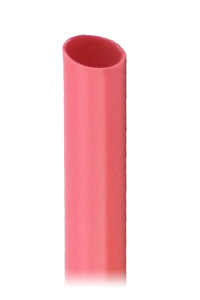
2-to-1
Two-to-one heat shrink is designed to easily slide down over small inline splices or connectors. It is ideal when the connection needs to be environmentally sealed or just needs a little extra protection. As the name implies, this type of heat shrinks the diameter, reducing it to 50% of the original diameter before being heated. With this reduction in size, it fits snugly over any hose, cable, or wire. Additionally, it is the perfect way to terminate the ends of braided sleeving in a way that creates a tight, professional appearance.
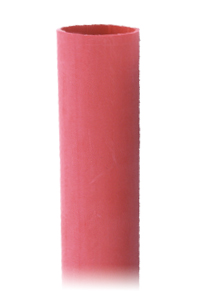
3-to-1
Three-to-one heat shrink is a little more flexible than two-to-one, and as you probably guessed by its name, it reduces to about 33% of its original diameter. It possesses a meltable inner lining of adhesive that, when heated, flows to ensure a complete seal. It is commonly used for insulation and mechanical protection. Additionally, because of the adhesive lined interior, this type of heat shrink creates a moisture-proof seal for complete protection of wires, components, connections, and splices.
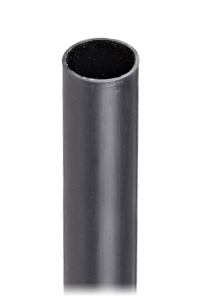
Heavy Wall
When dealing with components that need the highest level of protection, look no further than heavy-wall heat shrink. Have you noticed how the names of the heat shrink pretty much denote its properties? Good, then I do not need to explain what "heavy wall" means, right? This type of heat shrink is internally coated with a dual-purpose thermoplastic liner. When used, this heat shrink offers the mechanical strength of a superior adhesive and the corrosion protection of high-quality mastic.
What sizes (diameters) are available?
![]()
Depending of the type of heat shrink you are interested in, we offer outside diameters of
1/16”, 3/64”, 3/32”, 1/8”, 3/16”, 1/4", 3/8”, 1/2”, 3/4”, 1”, 1 1/2”, 2”, 3”, and 4”. It is important to note that not all sizes are available in all styles of heat shrink. In order to find the right heat shrink for your project, start by selecting the type that is best suited for the task. Once you have the right type of heat shrink, it is a simple matter of selecting the size that best corresponds to the wire, cable, or hose you are working with.
What advantages does heat shrink offer?
Heat shrink offers a range of benefits that you will not get with other types of wire management materials. The rugged exterior offers protection from impact, abrasion, moisture, oil, and stress. This makes heat shrink ideal for use in harsh environments where a high level of protection is required. For the highest level of impact and abrasion protection possible, heavy-wall heat shrink is the way to go. Regardless of the style of heat shrink you choose, you are guaranteeing a longer life to your electrical connections.
![]()
Impact
![]()
Moisture
![]()
Oil
![]()
Stress
So now you should have a better understanding of some of the types of heat shrink. To be fair, this is only a small glimpse into the types of heat shrink available. Why is it important to know about different types of heat shrink? Well, that’s because heat shrink offers a range of benefits, but only if used properly and only if the right type is used. With heat shrink you get good electrical insulation, protection from abrasion, impact, dust, solvents, and other foreign matter, as well as environmental protection from things such as moisture or oil. It also offers mechanical strain relief and durability. Again, you only get these benefits if you use it properly.
Important Note: Dangers of using heat shrink incorrectly
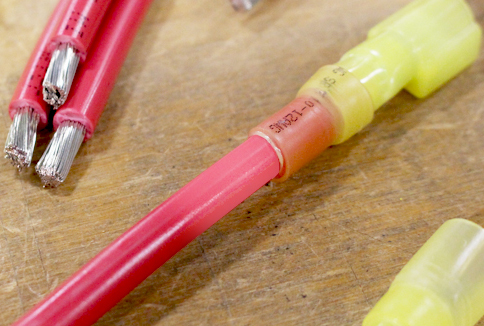
The biggest concern when using heat shrink is not to burn the insulation. Overheating the insulation can cause it to become weaker and, as such, offer less protection. You can tell if you have applied too much heat to the insulation if the color changes, or more obviously, if it begins to bubble or burn. If this occurs, your best bet is to recut, restrip, and reterminate the wire and begin again. The last thing you want to do is compromise the integrity of your wire. It is easier than you think to get the heat tool a little too close or linger a little too long. Your best bet is to test a piece of heat shrink on some disposable wire before working on anything important. This can give you the knowledge necessary to melt the heat shrink without damaging the insulation or the wire. If you need any pointers or just general help working with your heat shrink, contact a Pacer expert today, and we’ll make sure you walk away an expert on heat shrink.
